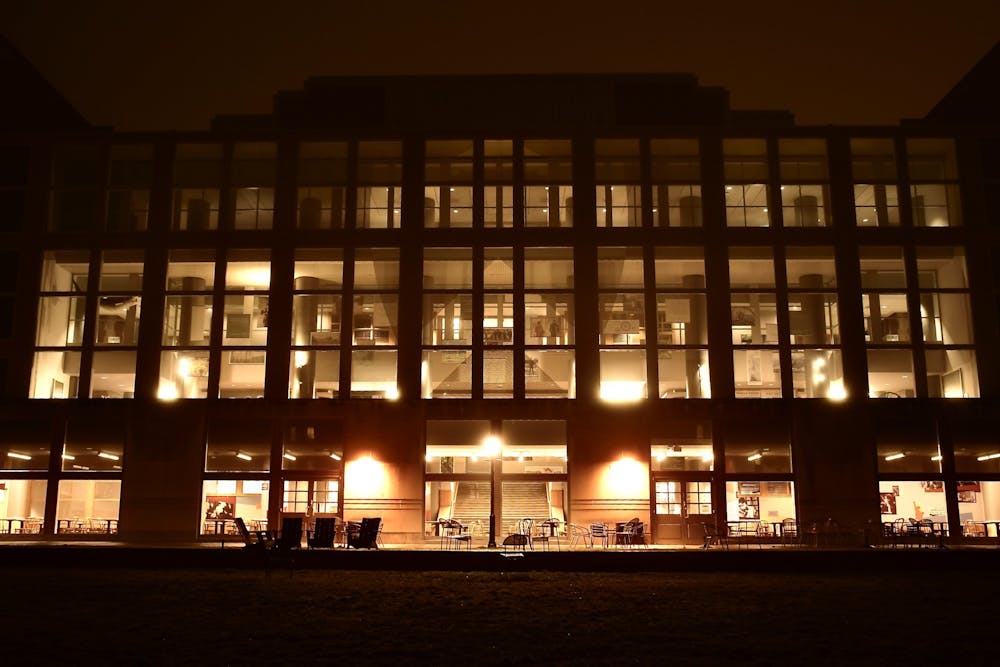Princeton attracts the world’s brightest minds like moths to a flame. Fortunately for us, the comparison ends there. While students lucky enough to attend the University can expect a phenomenal education, death awaits real moths that approach a flame. Indeed, insects’ fascination with light is fatal.
As New York Times Magazine writer Brooke Jarvis explains, scientists have long suspected that insect populations are dwindling dangerously. Due to the difficulty of tracking insects, however, scientists have largely lacked concrete evidence to substantiate their fears. Among others, a group of insect enthusiasts in western Germany’s Krefeld have changed that.
Volunteers at the nearly century-old Entomology Society Krefeld measured insect biomass at 63 nature preserves around the city. Their findings, published in this article, are shocking. They observed a 67 percent decline of flying insect biomass over 27 years. Although the Krefeld study’s geographic scope was limited, more recent research tells a similarly troubling story for insects across the world. A 2019 study found that over 40 percent of insect species across the globe could face extinction over the next few decades. The so-called “insect apocalypse” is upon us.
Humans are at the center of this apocalypse. Insect decline can be attributed to a number of anthropogenic factors, such as pesticide use and habitat depletion due to agriculture. Another major, though often overlooked, influence is artificial light at night (ALAN).
Many theories seek to explain why insects are attracted to artificial light. One popular theory suggests that artificial light sources distort nocturnal insects’ navigation abilities. Regardless of the exact relationship between insects and ALAN, light pollution amounts to a death sentence for many insects.
A 2020 study found, “one-third of insects attracted to stationary artificial light sources die before morning” and that “insects attracted to vehicle headlights likely die immediately.” The study also found that ALAN interferes with insects’ “movement, foraging, reproduction, and predation.”
Unfortunately, insects are unlikely to elicit our compassion. Many of us are involuntarily averse to insects. Flyswatters and bug traps are staple household items. We often support conservation efforts only when the species in question is “large and cute.” Dawn soap commercials, after all, feature ducklings and penguins, not bats or beetles, to promote sales.
Scientists are well-aware of this unfortunate reality, which informs their conservation work. For example, Washington University behavioral ecologist Brett Seymoure “hopes to look into the ways [light pollution] affects butterflies, which is more likely to spur public concern.”

We cannot, however, wait for evidence that ALAN harms butterflies before acting to save other insect species. Despite society’s apathy towards insects, their importance cannot be overstated. As a National Geographic headline declares, “Without Bugs, We Might All Be Dead.”
A 2017 study on the importance of insects called the six-legged creatures “the biological foundation for all terrestrial ecosystems.” Insects not only act as pollinators, but they are also a major food source for other organisms and contribute about $57 billion to the United States economy.
Although much work must be done to bolster insect populations, limiting light pollution is a tangible first step in preventing the insect apocalypse. For example, Germany is drafting a law that would regulate ALAN use, among other measures.
Since much of the research about ALAN’s effects on insects is quite recent, institutions have largely not altered their lighting practices in response to these findings. The Princeton community can and should be more conscious of its artificial light use, both at home and on campus. Princeton’s Office of Sustainability could spearhead these efforts on campus by reviewing the University’s current ALAN practices and analyzing how they could be adjusted to benefit insects.

Meanwhile, for those of us at home, here are four relatively simple methods to curb the negative effects of light pollution. We can put fixtures over exposed bulbs, which insects may mistake for the moon, and install yellow and orange lights instead of white ones, which are more attractive to insects. This pack of light bulbs, which give off a yellowish light, is available for $5.99.
With a few minor adjustments, the orange bubble could become a sanctuary that protects insets from light’s dark side.
Genrietta Churbanova is a first-year from Little Rock, Ark. She can be reached at geaac@princeton.edu.








